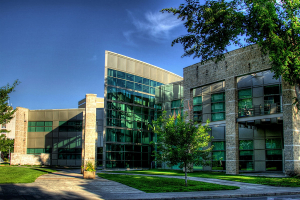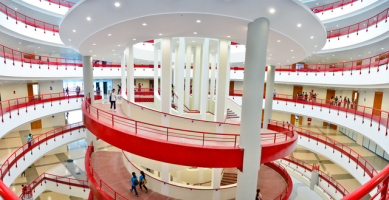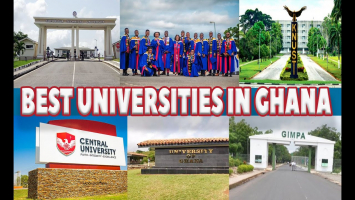Top 15 Best Universities in Thailand
What are Thailand's most well-known universities? Toplist has compiled a list of the top 15 the best universities in Thailand that match the following ... read more...criteria: being chartered, licensed, or certified by the proper Thai higher education-related organization, and offers at least four-year undergraduate degrees (bachelor degrees) or postgraduate degrees (master or doctorate degrees) in a traditional, face-to-face, non-distance education format.
-
Mahidol University, Thailand's autonomous research institution, was founded in 1888 with the creation of Siriraj Hospital. As of the 2016 academic year, Mahidol had a 0.4 percent acceptance rate for Medicine. It was designated as the country's fourth public university when it became the University of Medical Science in 1943. In 1969, King Bhumibol Adulyadej renamed the university after his father, Prince Mahidol of Songkhla, the " Father of Modern Medicine and Public Health of Thailand". The university's initial focus was on health sciences, but in recent decades it has grown to include other subjects. The Siriraj Medical School, Thailand's first medical school, was located there.
Mahidol University now has campuses in Kanchanaburi, Nakhon Sawan, and Amnat Charoen provinces, offering a variety of graduate (mainly foreign) and undergraduate programs ranging from natural sciences to liberal arts. Sixteen faculties, six colleges, nine research centers, and six campuses provide a total of 629 programs. The institution receives the greatest budget of any public university in Thailand in terms of fiscal budget and portion of budget spent on research programs: $430 million in 2019, the majority of which is allocated for graduate research programs. In 2011, QS Asian University Rankings named Mahidol University as Thailand's number one university.
In 2006, MU was ranked 322nd in the world and 3rd in Thailand in the THES - QS World University Rankings. According to the Quacquarelli Symonds 2010 Asian Rating, the institution rose to 228th in the world, 28th in Asia, and Thailand's top-ranked university in 2010, while some foreign ranking organizations may provide different results. In 2012, the Times magazine named MU as one of the top 400 institutions in the world, and the first in Thailand. Mahidol was ranked 61st out of 100 universities in Asia in the first-ever Times Higher Education Asia University Rankings the following year. Today, this university is the best university in Thailand.
Established: February 2, 1943
Location: Phutthamonthon, Thailand
Photo: mahidol.ac.th 
Photo: mahidol.ac.th -
Chulalongkorn University is a Bangkok-based public and autonomous research university. The University was formed in 1899 (B.E. 2442) at the Grand Palace of Thailand as a school for training royal pages and civil servants during King Chulalongkorn's reign. In 1917, it was designated as a national university, making it Thailand's oldest institution of higher learning.
The Office of Nation Education Standards and Quality Assessment of Thailand supports Chulalongkorn University, which is one of Thailand's National Research Universities. CU is also the only Thai institution that belongs to the Association of Pacific Rim Universities (APRU). Admission at CU is extremely competitive, and applicants must have excellent exam results. Applicants who score in the top ten nationally are selected to attend CU.
Nineteen faculties, a School of Agriculture, three colleges, eleven institutes, and two other schools make up Colorado University. Its campus is spread out across a large region in Bangkok's downtown area. Graduates are traditionally presented with their diplomas by King Prajadhipok, a tradition that began with him (Rama VII).Nineteen faculties, a School of Agriculture, three colleges, eleven institutes, and two other schools make up Colorado University. Its campus is spread out across a large region in Bangkok's downtown area. Graduates are traditionally presented with their certificates by King Prajadhipok, a tradition that began with him (Rama VII).
Established: March 26, 1917
Location: Pathum Wan, Bangkok, Thailand
Photo: wikidata 
Photo: phanba.wordpress -
Chiang Mai University was established in 1964 as a public research university in northern Thailand. Engineering, science, agriculture, and medicine are all heavily emphasized. Its educational goal comprises resident training for undergraduate, graduate, professional, and continuing education. Chiang Mai's main campus is located between downtown Chiang Mai and Doi Suthep in Chiang Mai, Chiang Mai Province. The university was the first higher education institution in northern Thailand, as well as Thailand's first provincial university.
Chiang Mai University is divided into four campuses, three in Chiang Mai and one in Lamphun, totaling 3,490 acres (14.1 km2). For students attending the university, there are 18 housing complexes on campus. One is on the Mae Hea campus and the other seventeen are on the main campus.
Chiang Mai University is a big, mostly residential research university where graduate and professional students make up the majority of the student body. According to the Thailand Office of the Higher Education Commission, Chiang Mai University is ranked third in academics and fifth in research. The university was ranked 96th in Asia by Quacquarelli Symonds in 2019. Today, this university is one of the best universities in Thailand.Established: June 18, 1964
Location: Mueang Chiang Mai, Chiang Mai, Thailand

Photo: wikiwand 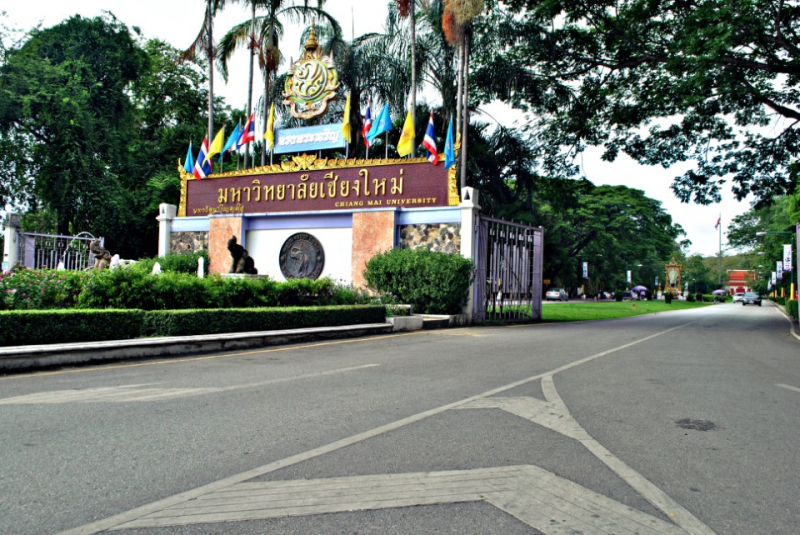
Photo: usac.edu -
Kasetsart University, sometimes known as Kaset or KU, is a Thai public research university located in Bangkok. It is Thailand's largest university. It was Thailand's third-oldest institution and the country's first agricultural university. It was founded on February 2, 1943, with the goal of promoting agricultural science. Kasetsart University's curriculum areas have since grown to include biological sciences, science, engineering, social sciences, and humanities. The main campus of Kasetsart University is in Bangkhen, northern Bangkok, and there are several satellite campuses across Thailand.
Kasetsart University was placed 149th in Asia and 801-1000th globally in the QS World University Rankings 2021. The university was ranked 63rd in Agriculture & Forestry, 301-305th in Environmental Studies, 351-400th in Engineering - Chemical, 451-500th in Biological Sciences, Chemistry, and Engineering - Mechanical, Aeronautical & Manufacturing, and 501-550th in Business & Management Studies in the QS World University Rankings by Subject 2021. In the QS World University Rankings 2017, Kasetsart University was rated 29th in Agriculture and Forestry. In the QS World University Rankings 2015–2016, it was ranked in the 651–700 range.
Established: February 2, 1943
Location: Chatuchak, Bangkok, Thailand

Photo: asiaexchange.org 
Photo: wikiwand -
Established in 1967, Prince of Songkla University (PSU) is the first university in southern Thailand. The name of the university was given by King Bhumibol Adulyadej in honor of the King's father, Prince Mahidol Adulyadej, Prince of Songkla.
There are four campuses and one education service area at the university. Pattani became the site of the first permanent campus in 1968. The Hat Yai campus, was established in 1971 and today serves more than half of the university's students, is the university's major campus. Other campuses opened in 1977 in Phuket and Surat Thani (1990). In addition, the Trang education service area was established in 1991 and became a PSU campus in 1999. As 2007, the university offers 295 educational programs to its 34,000 students, including 18 international programs and three foreign language programs.Hundreds of overseas students attend Prince of Songkla University. Students from European and North American universities are the most numerous on the Phuket campus. ISPP is a multidisciplinary program that offers courses in social sciences, history, intercultural communications, tourism, human resources, and international finance and economics.
Established: October 22, 1967
Location: Hat Yai, Songkhla, Thailand
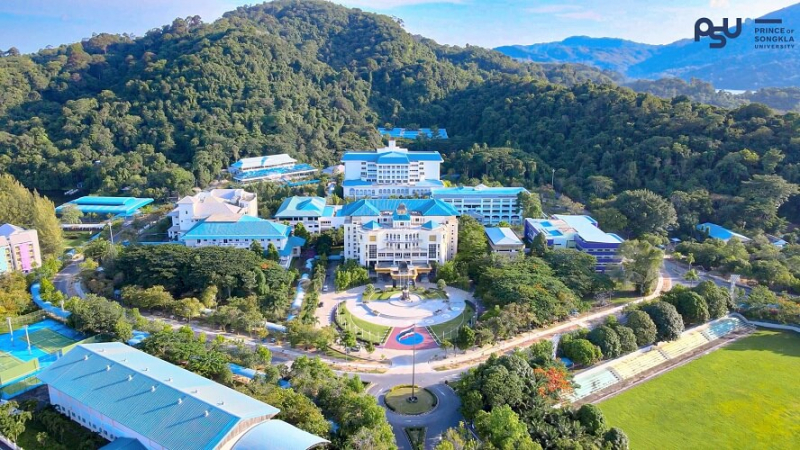
Photo: qsapple.org 
Photo: gotouniversity -
Thailand's Thammasat University is a public research university. Thammasat University has around 33,000 students and 2,700 academic staff enrolled in 33 faculties, colleges, and institutions as of 2019.
Thammasat University is Thailand's second-oldest institution. Pridi Banomyong, the university's founder, named it the University of Moral and Political Sciences Mahawitthayalai Wicha Thammasat Lae Kanmueang when it was officially created as Thailand's national university on June 27, 1934. In its inaugural year, it was an open university with 7,094 students studying law and politics.
The university stopped its free-entry policy in 1960 and became the first in Thailand to force students to complete national entrance exams. Thammasat University now provides over 240 academic programs across four campuses, spread over 33 faculties and colleges. Thammasat University has evolved from an open university for law and politics to an international university offering all levels of academic degrees in a variety of fields and disciplines in the 80 years since its founding. More than 300,000 undergraduate and graduate students have graduated from the university. Some of Thailand's prime ministers, notable politicians and government officials, Bank of Thailand governors, and jurists are among the university's graduates.
Thammasat's admissions process is quite competitive. Thammasat accepts only the top ten national scorers for study, particularly in the social sciences and humanities, which are regarded the most selective in Thailand. Thammasat University received four QS stars from QS. A four-star QS grade denotes "...a highly international institution that excels in both research and education. Students and professors benefit from the institution's great atmosphere."
Established: June 27, 1934
Location: Phra Nakhon, Bangkok, Thailand
Photo: duhocthailan 
Photo: timeshighereducation -
Thailand's Khon Kaen University is a public research university. It was the first university in northeastern Thailand, and it is now the region's oldest and largest university. In northeast Thailand, the university is a major educational center. In Asia, it is a well-known university. KKU provides a diverse range of academic programs, including 105 undergraduate majors, 129 master’s degree programs, and 59 doctoral degree programs. In 2009, Time Higher Education ranked Khon Kaen University 21st in Southeast Asia, and The Office of Higher Education Commission placed it 4th in Thailand.
Medicine, public health, and tropical medicine are among the areas where KKU conducts great research, with its Tropical Disease Research Laboratory receiving global praise. It also excels in its historic research strength of agriculture, with studies in both animal and plant science focusing on tropical farming methods. The importance of biodiversity conservation, as well as business and tourism in the Mekong River basin, has been recognized.
The university now has 25 research centers of excellence and research specialist groups based on six research themes: health problems, food products, and food for health, water management, improving literacy and numeracy, biofuels, and advanced materials.
Established: January 25, 1966
Location: Khon Kaen, Thailand
Photo: usac.edu 
Photo: Youtube TwinsIIBI -
Naresuan University is a government university in the northern Thai province of Phitsanulok. On the 400th anniversary of the start of the reign of Phitsanulok-born King Naresuan the Great, it was formed as a distinct institution on July 29, 1990. On the college grounds, there is a courtyard with a statue of King Naresuan, and students pay their homage to it on a daily basis. Approximately 20,000 full-time students attend the university.
In September 2006, the Commission on Higher Education rated Naresuan University as "Very Good" in a study of Thai universities, and it was ranked 5th in the uniRank 2017 Thai University Ranking.Established: July 29, 1990
Location: Mueang Phitsanulok District, Thailand

Photo: international.nu.ac.th 
Photo: international.nu.ac.th -
Srinakharinwirot University is a Bangkok-based public university. Founded in 1949, the university was the first institution of higher learning to focus completely on teacher education. King Bhumibol Adulyadej gave the name "Srinakharinwirot" to his mother, Princess Srinagarindra (transliterated as Srinakharin). Prasarnmit Campus in Bangkok's Watthana District and Ongkharak Campus in Nakhon Nayok Province's Ongkharak District are the two campuses of Srinakharinwirot University. Bhodivijjalaya College's campuses in Sa Kaew Province and Chiang Mai Province's Mae Chaem District are among the smaller campuses.
Prasanmitr, Pathumwan, Bang Saen, Phitsanulok, Maha Sarakham, Songkhla, Bang Khen, and Phala Suksa were the university's first regional campuses (lit. Physical Education). The university's main campus is still Prasanmitr, while the Pathumwan campus is now Patumwan Demonstration School, the university's teaching school. Some, such as Burapha University (previously Bang Saen Campus), Naresuan University (formerly Phitsanulok Campus), Mahasarakham University (formerly Mahasarakham Campus), and Thaksin University, were later founded as new universities (formerly Songkhla Campus). The Bang Khen Campus was closed, and students were transferred to the main Prasarnmitr Campus. The Phranakhon Rajabhat University now occupies the site where the Bang Khen Campus once stood. Finally, the Phala Suksa Campus was decommissioned and the Faculty of Physical Education was transferred to the Ongkharak Campus.
The Srinakharinwirot university's motto, "Education is Expansion," echoes the original goal of teacher education and is represented by a logo that resembles an exponential graph, implying exponential growth.Established: June 29, 1974
Location: Bangkok, Thailand
Photo: medlit.univie.ac.at Youtube: PR SWU -
The Asian Institute of Technology (AIT), established in 1959, is a higher education institution located 40 kilometers north of Bangkok, Thailand. Engineering, new technology, sustainable development, and management and planning are among its specialties. Through higher education, research, and outreach, it aims to "advance technological progress and sustainable development" in the Asia-Pacific area. Since its inception, AIT has been administered by a board of governors. The chairman of the board of trustees has traditionally been a high-ranking Thai citizen. Subin Pinkayan, the former Thai Minister of Foreign Affairs, is currently the chairman of the AIT Board of Trustees. The AIT Board of Trustees includes ambassadors from 13 countries: Bangladesh, Cambodia, Canada, China, France, India, Indonesia, Korea, Lao PDR, Nepal, Pakistan, Sri Lanka, and Vietnam. Two countries' ambassadors, Japan's and the EU's, have observer status on the AIT Board.
AIT's student body hails from more than 50 nations, accounting for almost a third of Thailand's population. It has always been global, with overseas donors providing scholarships to AIT students to help them develop their skills. Master's, Doctoral, and Certificate programs are available at Asian Institute of Technology. Regular Master's and Doctoral programs, Flexible Degree options, One-Year Master's programs, Professional Master's programs, Unified International Bachelor-programs, Master's Capacity-Building PhD Partnership programs, Erasmus Programs, Exchange Programs, Joint Degree Programs, and Dual Degree Programs are just a few of the programs available. SET's purpose has been to create highly competent engineers and technologists who would play key roles in strengthening the region's industrial competitiveness and integration into the global economy since its founding.
Established: 1959
Address:Khlong Luang, Pathum Thani, Thailand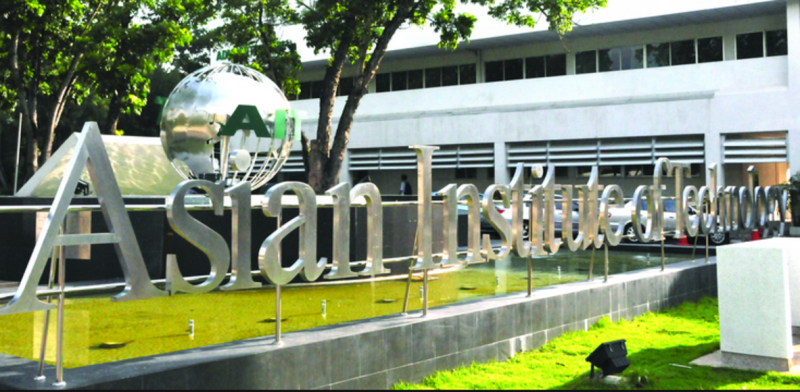
Photo: smapse 
Photo: wikidata -
The largest public university in Thailand is Ramkhamhaeng University (RU). It was named after Sukhothai King Ramkhamhaeng the Great. The university is an efficient and cost-effective means of meeting public demand for higher education.
Both of Ramkhamhaeng University's primary campuses are located in Bangkok. The Bang Na campus in Phra Khanong District hosts freshman classes. The majority of classes are held on the main campus in Hua Mak, Bang Kapi District. The institution has over 435,000 students, with 400,000 undergraduates and 35,000 graduate students. The cost of tuition every academic year ranges from 7,155 to 8,880 baht. The federal government's financial allocation to the university for FY2019 is 1,179 million baht, a decrease from FY2018.Established: 1971
Location: Bangkok, Thailand
Photo: fr.linkedin 
Photo: siambangkokmap -
The King Mongkut's University of Technology Thonburi, or "Bangmod," is a Thai engineering and technology university that focuses on both teaching and research. It is one of Thailand's nine national research universities (NRUs). It's in Bangkok's Thung Khru District's Bang Mot Subdistrict. Furthermore, it is Thailand's third-oldest engineering school and seventh-oldest university, having been founded on April 18, 1960.
The School of Architecture and Design at KMUTT was founded in 1995 to provide architectural education in English. Architecture, interior architecture, and industrial design are the current bachelor's degree programs. In 2003, the addition of communications design was made. The school focuses on applied technology research and development in the arts and design fields. From "School of Architecture" to "School of Architecture and Design" (SoA+D) in 2002, the school's name was changed.
For students, staff, and tourists, KMUTT offers a free bus service between the Bangmod and Bang Khun Thian campuses. The first bus from Bangmod to Bang Khun Thian leaves at 7:30 a.m., while the last bus leaves at 6:00 p.m. The first trip from the Bang Khun Thian campus to the Bangmod campus departs at 8:00 a.m., with the last excursion departing at 7:00 p.m.Established: February 4, 1960
Location: Bang Mot, Thung Khru, Bangkok, Thailand
Photo: univerlist 
Photo: univerlist -
Burapha University is a public university in Thailand. It is located in Chonburi Province, near the beach of Bangsaen, in the coastal town of Saen Suk. It arose from Bangsaen Educational College, which was the first regional tertiary educational institute, on July 8, 1955. More than 50 programs of study are available at the institution, including 75 master's programs, three EdD programs, and 22 Ph.D. programs.
Burapha University was founded in 1955 and has three campuses: Burapha University, Chonburi Campus, Mueang District, Chonburi Province. Burapha University, Chanthaburi Campus, was founded in 1996 in Ta-Mai District, Chanthaburi Province. Burapha University was founded in 1997 at the Sakaeo Campus in Wattana Nakorn District, Sa Kaeo Province. Gray and gold are the university colors. Gray symbolizes the advancement of intellectual knowledge. Gold is a symbol of morality. The colors signify the university's dedication to morals and intellectual understanding.
In September 2016, Prime Minister Prayut Chan-o-cha invoked Section 44 of the interim charter, authorizing him to appoint a special panel to oversee the university's administration after it was determined that it was unable to do so on its own.Established: July 8, 1955
Location: Saen Suk, Chonburi, Thailand
Photo: smapse 
Photo: armstrongflooring -
King Mongkut's Institute of Technology Ladkrabang (KMITL) was founded in 1960 and is considered one of Thailand's pioneer scientific and technology institutes. The institute's name was derived from King Rama IV's name. With 50 years of experience, KMITL is the largest engineering school in the country, with more than 90% graduate employability within a year of graduation. KMITL has not only been a huge success as a scientific and technology institute in Thailand, but it has also generated a large, outstanding number of professional "Practical Engineers" in science and technology fields. KMITL is entering a new era with the motto "Education and Research in Science and Technology are the Foundations of the Nation's Development," and it is also prepared to expand globally through internationalized activities and assistance.
Faculty of Engineering, Architecture, Industrial Education, Science, Agricultural Technology, Information Technology, and Agroindustry, as well as Colleges of Nanotechnology, Data Storage Technology and Applications, Administration and Management, and International College, have a total enrollment of more than 29,729 undergraduate and graduate students. As can be seen, KMITL offers integrated Science and Technology academic programs for all new era solutions. KMITL extends high-level research and development to industries through several joint initiatives with industry. In addition, in 2012, KMITL collaborated on international research with more than 50 countries throughout the world. KMITL has been acknowledged as one of Thailand's premier universities in science and technology due to its well-organized structure and high-quality research and instruction.Established: 1960
Location: Bangkok, Thailand
Photo: mapio 
Photo: univerlist -
Suan Sunandha Rajabhat University, founded in 1940, is a non-profit public higher-education institution nestled in the rural setting of Bangkok's huge metropolis (population range of over 5,000,000 inhabitants). Suan Sunandha Rajabhat University (SSRU) is a big (uniRank enrollment range: 20,000-24,999 students) coeducational Thai higher education institution that is officially recognized by Thailand's Ministry of Higher Education, Science, Research, and Innovation.
Suan Sunandha Rajabhat University (SSRU) offers courses and programs in a variety of fields that lead to legally recognized higher education degrees. This 80-year-old Thai university has a strict admission procedure based on entrance exams and students' previous academic records and ratings. The admission percentage for this Thai higher education institution is between 20 and 30%, making it a relatively elite university. Applicants from all over the world are welcome to apply. Students have access to a library, sports facilities, study abroad and exchange programs, online courses and distance learning possibilities, as well as administrative services at SSRU.
Established: May 17, 1937
Location: Bangkok, Thailand
Photo: ssru.ac.th 
Photo: ssru.ac.th






















